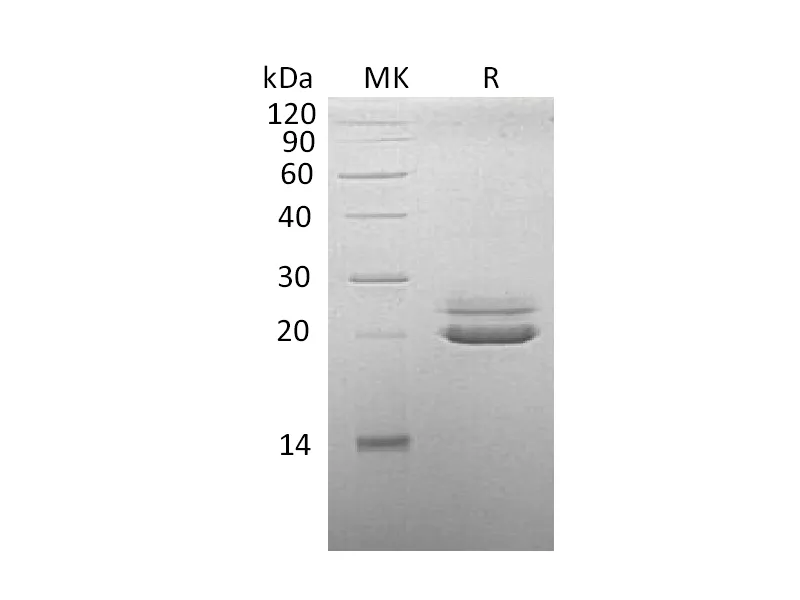
Size2:50μg price2:$378
Size3:500μg price3:$1890
| Name | Recombinant Cynomolgus FGF-21 (C-6His) |
| Purity | Greater than 95% as determined by reducing SDS-PAGE |
| Endotoxin level | <1 EU/µg as determined by LAL test. |
| Construction | Recombinant Cynomolgus Fibroblast Growth Factor 21 is produced by our Mammalian expression system and the target gene encoding His29-Ser209 is expressed with a 6His tag at the C-terminus. |
| Accession # | XM_005589811.2 |
| Host | Human Cells |
| Species | Cynomolgus |
| Predicted Molecular Mass | 20.2 KDa |
| Buffer | Lyophilized from a 0.2 μm filtered solution of PBS, pH 7.4. |
| Form | Lyophilized |
| Shipping | The product is shipped at ambient temperature.Upon receipt, store it immediately at the temperature listed below. |
| Stability&Storage | Lyophilized protein should be stored at ≤ -20°C, stable for one year after receipt. Reconstituted protein solution can be stored at 2-8°C for 2-7 days. Aliquots of reconstituted samples are stable at ≤ -20°C for 3 months. |
| Reconstitution | Always centrifuge tubes before opening.Do not mix by vortex or pipetting.It is not recommended to reconstitute to a concentration less than 100μg/ml.Dissolve the lyophilized protein in distilled water.Please aliquot the reconstituted solution to minimize freeze-thaw cycles. |
Alternative Names
FGF21; Fibroblast Growth Factor 21;FGF-21
Background
Fibroblast Growth Factor 21 (FGF21) is a growth factor that belongs to the FGF family. FGF family proteins play a central role during prenatal development and postnatal growth and regeneration of mamy tissues, by promoting cellular proliferation and differentiation. FGF21 is a potent activator of glucose uptake on adipocytes, protects animal from diet-induced obesity when overexpression in transgenic mice, and lower blood glucose and triglyceride levels when therapeutically adiministered to diabetic redents. FGF21 is produced by hepatocytes in reponse to free fatty acid stimulation of a PPARa/RXR dimeric complex. This situation occurs clinically during starvation, or following the ingestionof a highly-fat/low-carbohydrate diet. Upon FGF21 secretion, white adipose tissue is induced to release free fatty acids from triglyceride stores. Once free fatty acid reach hepatocytes, they are oxidized and reduced to acetyl-CoA. The acetyl-CoA is recombined into 4-carbon ketone bodies, release, and transported to peripheral tissue for TCA processing and energy generation.
Note
For Research Use Only , Not for Diagnostic Use.
